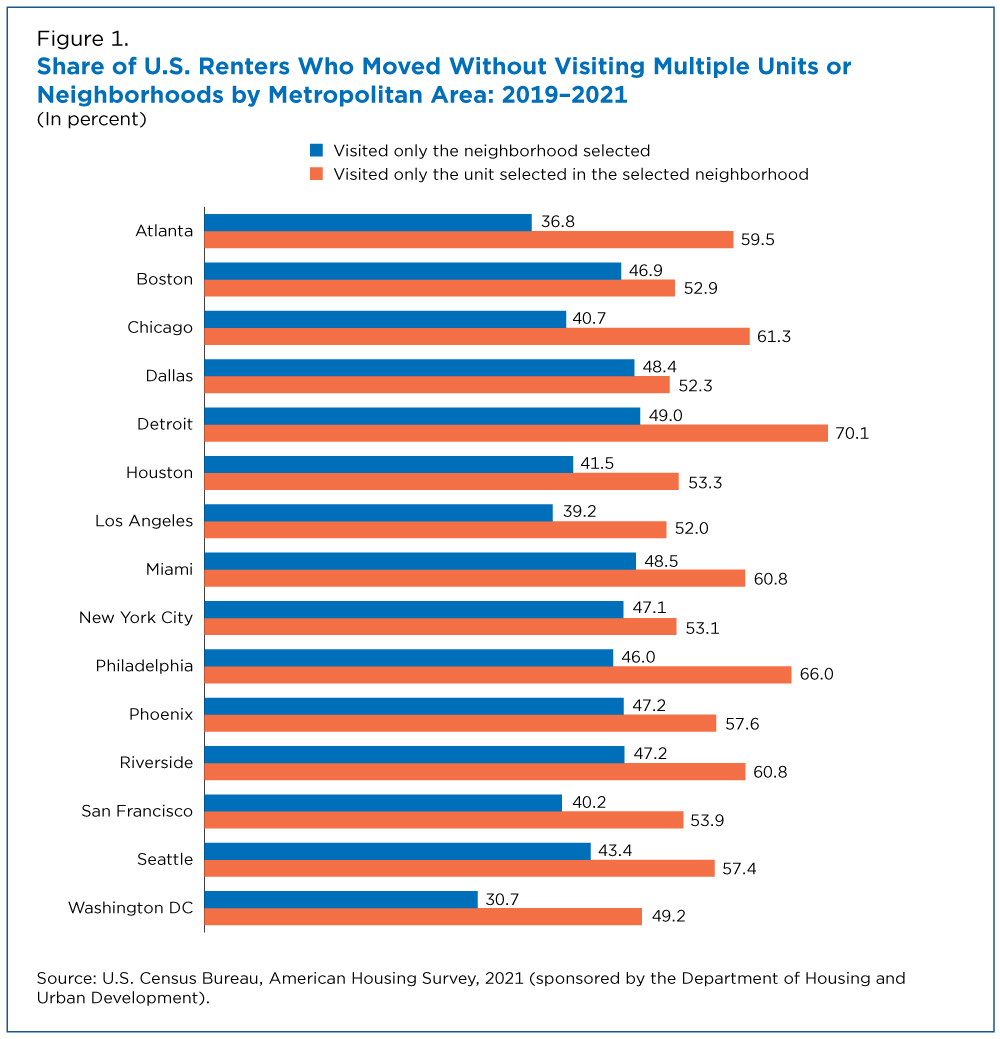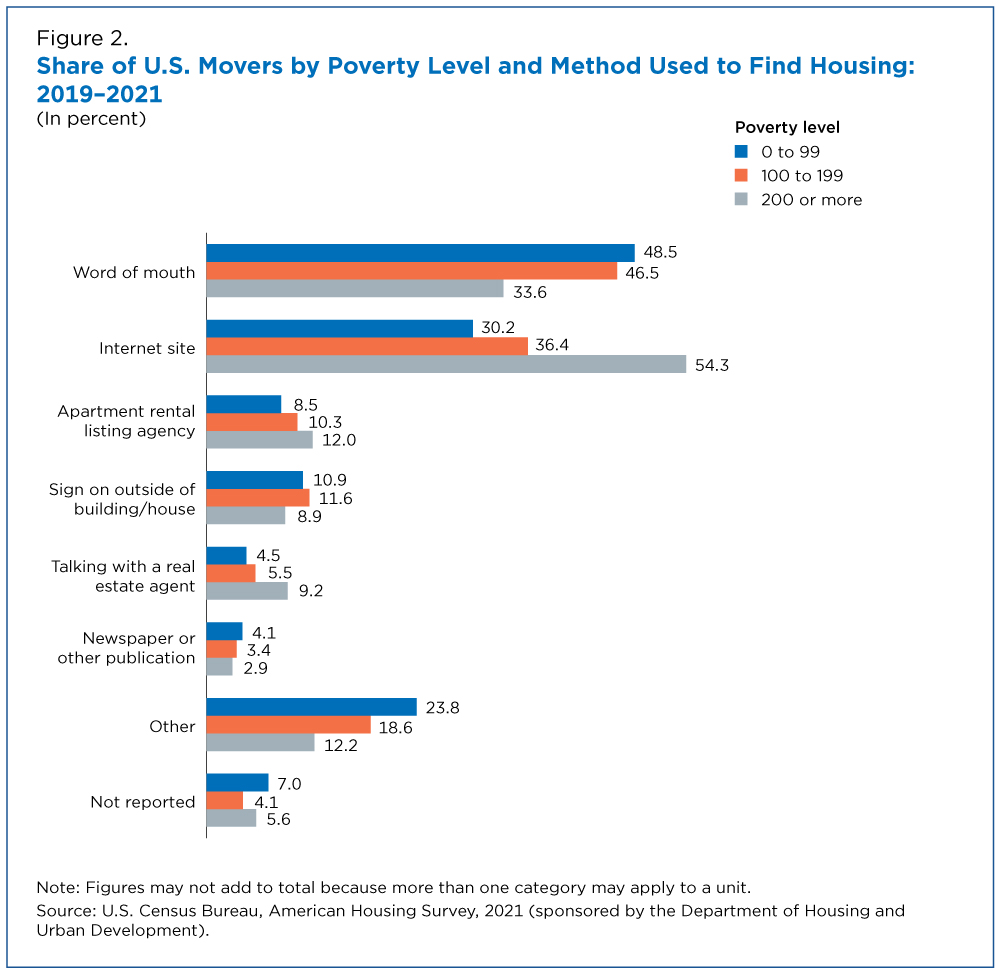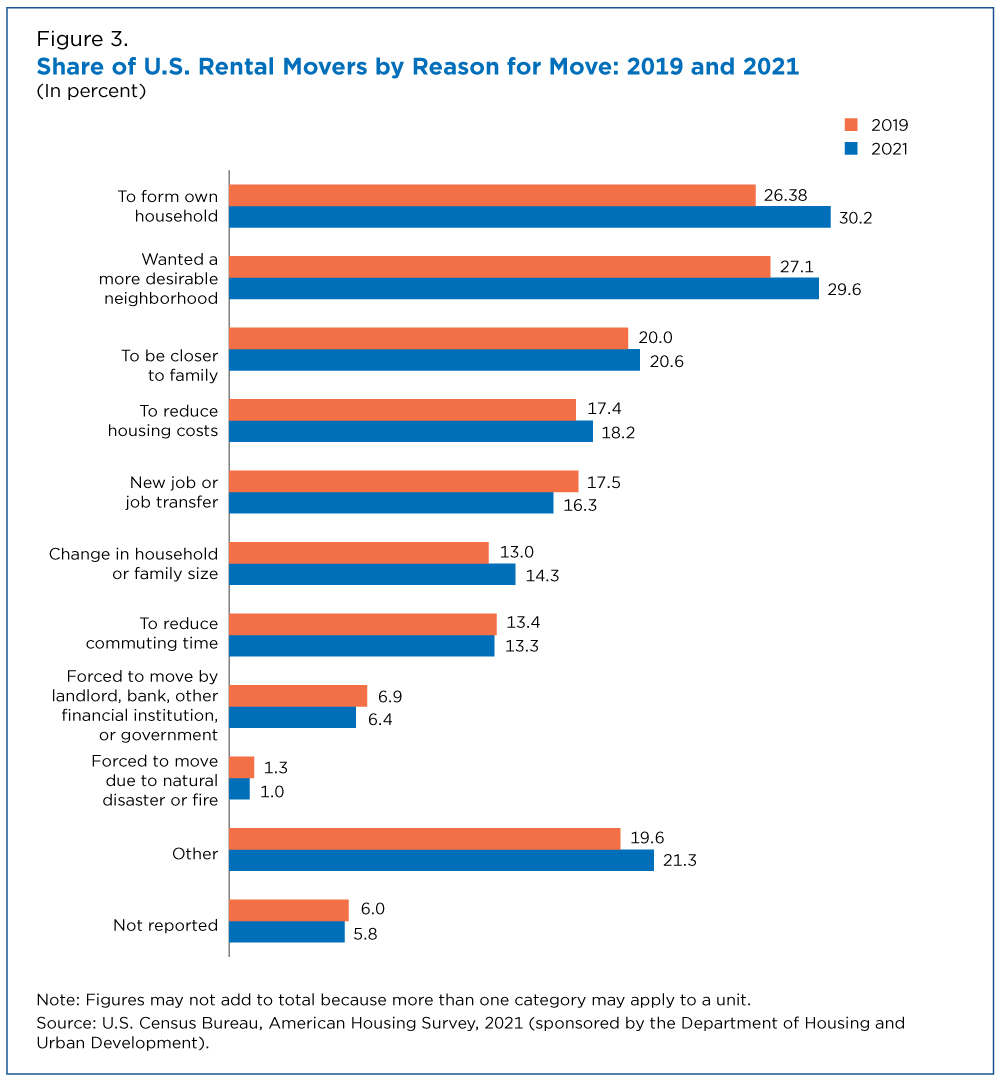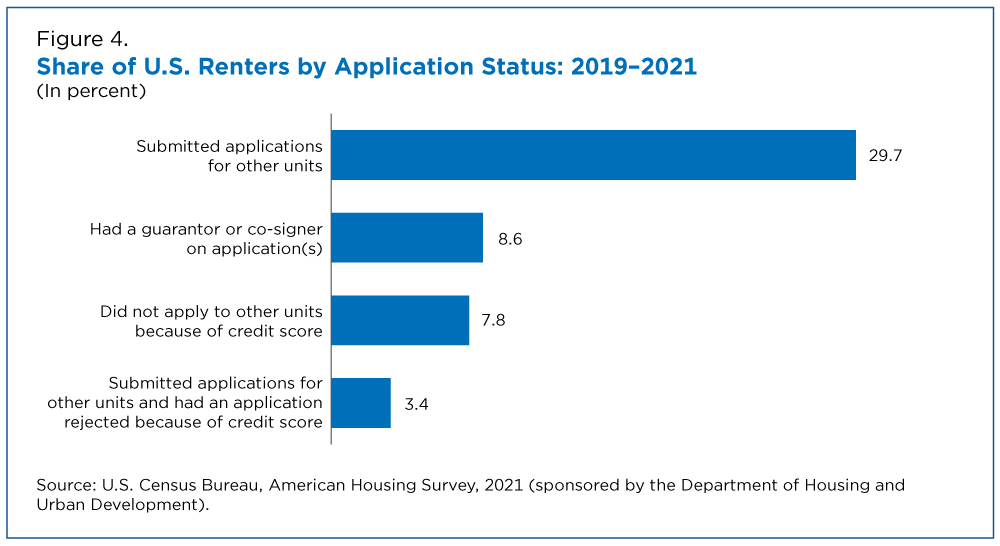By Alex Rhodes and Kevin Bragdon, U.S. Census Bureau
House hunting has been a rather quick endeavor for most U.S. renters. Over half (58.5%) who moved between 2019 and 2021 found a new place to live in less than a month.
The recently released 2021 American Housing Survey (AHS) shows how those who moved into rental units between 2019 and 2021 searched for their homes. The AHS measures the reasons why (motivations) and provides profiles of renters who moved close to the start of the COVID-19 pandemic. Unless otherwise noted, all percentages exclude nonresponses.
Around 31.8% of renter households cited upgrading to a larger or better-quality home as a reason for moving, up from 27.5% in 2019.
The majority (81.3%) of renters who moved during this timeframe reported they had sufficient time for their housing search yet over half (56.5%) of those who ended their search early indicated it was because they had to move quickly.
About 46.9% said they viewed units in only one neighborhood and 64.2% visited just one unit in their chosen neighborhood.
Housing Search in Metro Areas
Most renters in the nation’s top 15 metropolitan areas searching for a place stayed in their current neighborhood and rented the only place they viewed.
Housing search experiences varied, however. In the Detroit metro, more renters (70.1%) who moved chose the one unit they visited in their current neighborhood, while only 49.2% in the Washington, D.C. metro settled on the only place they viewed in their neighborhood.
How Do Renters Find Rentals?
Nationally, the two most prevalent ways renters who moved from 2019 to 2021 found places were through internet sites such as Craig’s List, apartment.com, realtor.com and or Zillow (46.0%) and word of mouth (39.1%).
According to the survey, affluent renter households (above 200% of the federal poverty level) were more likely than those below the poverty level to use internet sites to search new rentals (54.3% and 30.2%, respectively).
In contrast, word of mouth was the more popular way for lower-income renter households — 48.5% found new places this way compared to 33.6% of higher-income households.
Why are Renters Moving?
Around 31.8% of renter households cited upgrading to a larger or better-quality home as a reason for moving, up from 27.5% in 2019.
In 2021, 30.1% of renter households (like young adults who moved out of their parents’ homes) said they moved because they wanted to form their own household, up from the 26.4% in 2019.
The share of households that moved due to a change in household or family size also increased, from 13% in 2019 to 14.3% in 2021.
Who’s Submitting Rental Applications?
In 2021, the AHS for the first time collected information on the rental application experience of those who moved between 2019 and 2021.
Among questions included: whether applicants had a co-signer or guarantor; had submitted applications for multiple units; and if their credit score had resulted in a rejected application or had discouraged them from applying for multiple units.
Nationwide, 8.6% of U.S. renter households who moved from 2019 to 2021 had a co-signer or guarantor during the application process. Householders under age 25 made up only 15.6% of renters who moved during this period but they accounted for 42.6% of renters who reported a co-signer or guarantor.
Approximately 29.7% of renters who moved reported submitting applications to more than one housing unit. About 7.8% reported they did not submit an application because of a low credit score and 3.4% reported a rental application was rejected due to their credit score.
How Do Renters Find Rentals?
AHS is sponsored by the Department of Housing and Urban Development (HUD) and conducted by the U.S. Census Bureau. It is the United States’ most comprehensive housing survey, providing information on the physical condition of homes and neighborhoods, the costs of financing and maintaining homes and the characteristics of people who live in these homes.
Data and tabulations used in this story are available from the American Housing Survey webpage and the AHS Table Creator Tool. A companion infographic, “How Did Renters Find a New Place to Live?” is also available.
Information on confidentiality protection, methodology, sampling and nonsampling error, and definitions is also available on the AHS page.





